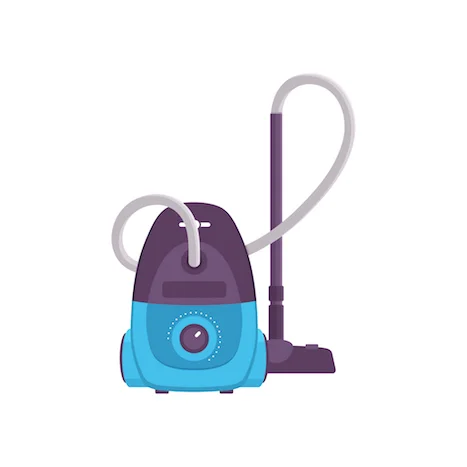A vacuum cleaner suck up dirt and dust from carpets.
A rotating brush at the front of the cleaner loosens the dust in the carpet.
An electric motor and a fan push air out of one end of the cleaner and sucks new air in the other end.
As the new air enters the cleaner it carries the dust and dirt with it.
The dust and dirt are trapped in a container inside the cleaner.
Early cleaners
Before there were vacuum cleaners, people took their carpets and rugs outside to beat the dust out of them with a carpet beater. Floors were swept with brooms and scrubbed by hand with brushes, soap and water.
Hand pumped rug cleaners
Hand pumped rug cleaners were in use in England and the United States from the 1800s and in 1899 an American, John Thurman, invented a motorised sweeping machine with a petrol - driven motor. He took it door to door offering to clean houses for $4 a visit. His machine wasn't a true vacuum cleaner.
Ives McGaffey was granted the first patent for a 'sweeping machine' in Chicago USA in 1869.
A true vacuum cleaner
In England in 1901 Hubert Cecil Booth patented a vacuum cleaner requiring one person to turn the handle of a pump to create a vacuum while another moved the cleaning hose over the carpet. The cleaner was too large to fit inside homes so it was parked outside and the hoses were carried inside.
In 1906 American James Murray Spangler invented the first portable vacuum cleaner. He connected an electric fan to a tin box with a broom handle attached. He used a pillow case as a dust collector. Later, cloth filter bags and cleaning heads and hoses were added. Spangler called his invention a 'suction sweeper'.
An early model of a Hoover vacuum cleaner. Image © PictureTip.com
In 1908 William Hoover bought Spangler's patent, and he soon had a small staff turning out six suction sweepers a day. Hoover made further improvements to the vacuum cleaner.
When he gave people a ten-day, free home trial and used door-to-door salesmen who gave home demonstrations of the new vacuum cleaners, his invention took off and Hoover's name became the one that people associate the vacuum cleaner rather than with Spangler.
How does a vacuum cleaner work?
Upright vacuum cleaners
Upright vacuum cleaner ©iStock/Getty Images
When a modern upright vacuum cleaner is turned on, air is removed from inside the cleaner by an electric powered fan to create a partial vacuum. The air is thrown out of the back of the cleaner and this causes air to be sucked up from the carpet, floor or upholstery, carrying dust and dirt with it.
As the air passes through the paper or cloth bag, the dust and dirt are caught in the bag and the air passes out of the back of the cleaner.
Cylinder vacuum cleaners
Image © iStock/Getty Images
In cylinder vacuum cleaners, a fan pulls the air out of the hose, causing outside air to be pulled into the machine, carrying dust and dirt with it.
In vacuum cleaners without a bag, the incoming air is whirled around by the fan and the dust and dirt collect on the walls of a compartment inside the cleaner, to be emptied later.




